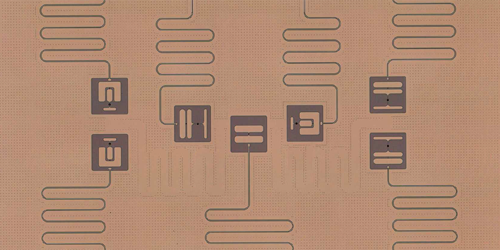New Qubit Enters the Quantum-Computer Arena
When it comes to superconducting quantum processors, the go-to qubit is the “transmon,” which has a low sensitivity to noise. Processors with more than 50 transmons are readily available, and a system with 127 transmons was recently demonstrated. Despite these achievements, transmons have operational issues that could hinder systems containing larger numbers of these qubits. Now Baleegh Abdo and colleagues at IBM Research Center in New York have developed a new superconducting qubit that solves one of these problems [1]. The new qubit could potentially replace transmons in the next set of superconducting quantum processors.
The issue that the team addresses is the “frequency-collision” problem. In the past, transmon qubits operated at a fixed frequency, meaning that in circuits containing large numbers of them, gate errors could occur because of overlap in the qubits’ excitation energies. Having neighboring qubits with slightly different operational frequencies can solve the issue. But previous tunable transmons were highly susceptible to noise, such as magnetic-flux noise, which can cause rapid dephasing of the transmons and gate errors.
Abdo and colleagues get around the issue by creating a frequency-tunable qubit that doesn’t suffer from dephasing. Like transmons, their “weakly tunable qubit” (WTQ) operates using Josephson junctions, but it contains three junctions rather than one. Each junction has slightly different properties, which the team exploits to tune each qubit’s frequency by a few tenths of a percent. The tunability is large enough to avoid frequency collisions yet small enough to limit their susceptibility to noise. The researchers says that their use of Josephson junctions should aid in the adoption of WTQs, as they are made using the same processes as transmons.
–Katherine Wright
Katherine Wright is the Deputy Editor of Physics Magazine.
References
- J. M. Chávez-Garcia et al., “Weakly flux-tunable superconducting qubit,” Phys. Rev. Appl. 18, 034057 (2022).




